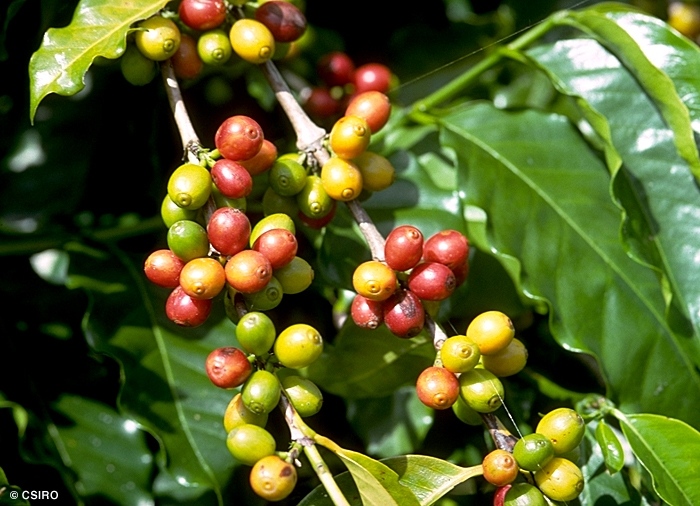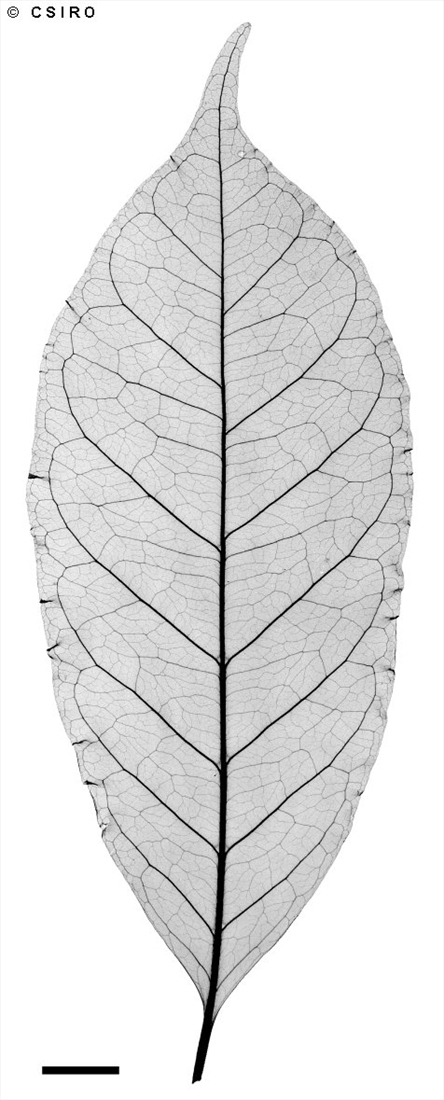Australian Tropical Rainforest Plants - Online edition
Coffea arabica L.





Linnaeus, C. von (1753) Species Plantarum 2: 172. Type: Habitat in Arabia felici.
Arabica Coffee; Coffee, Arabica; Coffee; Arabian Coffee; Coffee, Arabian
A small tree not exceeding 20 cm dbh.
Fruit ellipsoid or cylindrical, about 12-16 mm long. Each fruit contains one or two pyrenes rounded on one side and flat on the other.
Cotyledons +/- orbicular or transversely elliptic, about 20-30 x 35-40 mm. At the tenth leaf stage: leaf blade elliptic, apex acuminate, base cuneate; stipules broad at the base but abruptly narrowed into a point at the apex. Seed germination time 47 days.
An introduced species originally from East Africa, widely cultivated in Australia and now naturalised in places in NEQ, particularly on the Atherton Tableland. Altitudinal range from near sea level to 750 m. Grows in rain forest regrowth and disturbed rain forest.
Cultivated widely through out the world for it mass flowering and red fruits. Numerous strains and variety are grown for commercial coffee production.





